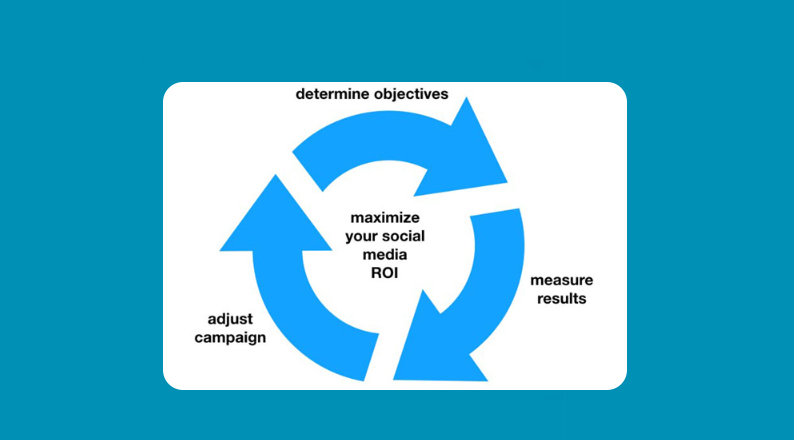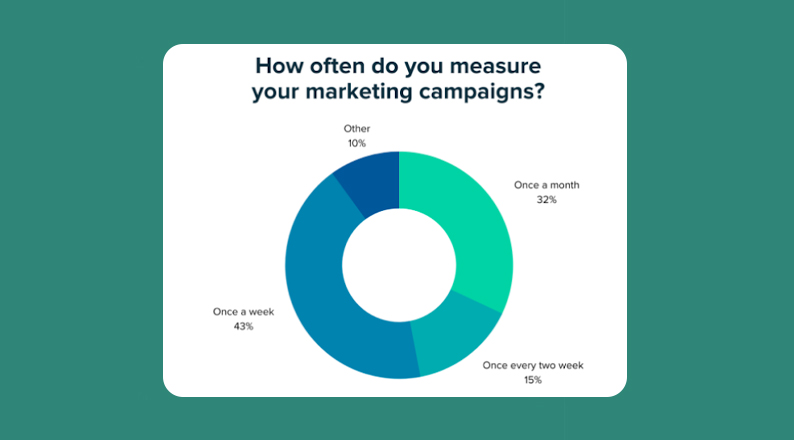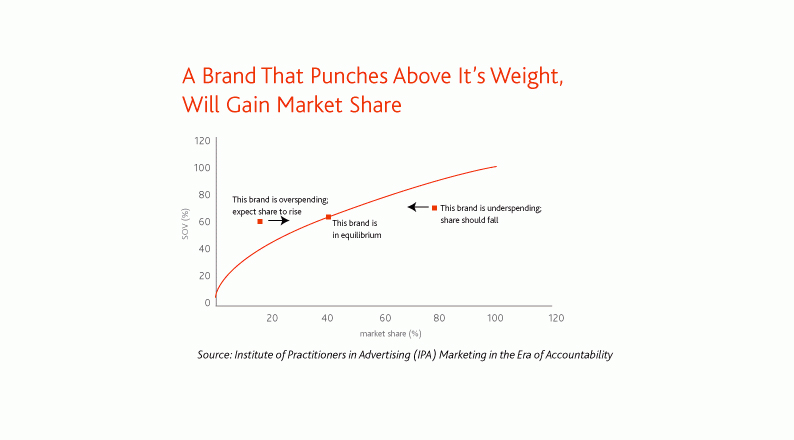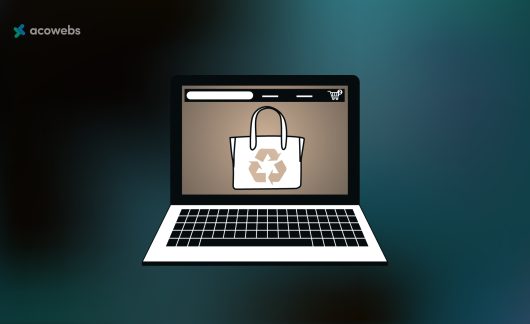The most successful eCommerce retailers do one thing in particular: they leverage the data generated by their site and marketing or promotion initiatives.
The insights provided might be quite valuable in assisting you to thrive by providing a clear snapshot of your company’s entire performance.
The measurement of eCommerce analytics has a significant financial value because it influences not just your reputation but also your firm’s revenue. Adopting data-driven solutions is often the best way to go because it eliminates the uncertainty of the approach.
Nevertheless, promoting your store may be a daunting experience, and determining whether that advertisement or campaign was successful can be difficult.
According to SuperOffice research, consumer experience should always take precedence above products and pricing.

Business’s Top Priority in the Next 5 Years – Image Source: SuperOffice
Customers, though, are surrounded by alternatives. One terrible online purchasing experience may cause buyers to never return to your eCommerce store again.
PwC Future of Customer Experience Survey shows that 32% of all consumers would cease doing business with a company they liked after one awful experience.
In Latin America, 49% of buyers believe they would abandon a brand after just one bad experience.

PwC Future of Customer Experience Survey – Image Source: PwC
Shopify is an excellent platform for all categories of online businesses.
However, as shown by the data above, in order to maintain the 32% in your Shopify store, you must optimize your site for SEO. This approach entails monitoring your marketing performance.
In this guide, we’ll go through how to measure marketing performance of Shopify store for optimum search engine visibility. Everything from why you should measure your marketing initiatives to marketing metrics and KPIs for your store will be covered.
Let’s get started!
Measuring Your Marketing Campaigns: Why Is It Important?
Organizations use marketing effectiveness measurement to examine and evaluate the efficacy and influence of marketing.
It is both a necessary and valuable step. Almost every company’s goal is to generate or increase profits.
Unfortunately, many merchants make the same mistake of adopting high-level vanity metrics to measure marketing efficacy throughout their marketing efforts.
Although vanity metrics have some significance, it is impossible to measure marketing performance solely by looking at analytics like visitors, views, and sales.
Now that you understand the term measuring marketing effectiveness, here’s why you should measure marketing campaigns.

Measuring Your Marketing Performance – Image Source: UCSF Radiology
1. Marketing insights are crucial since they allow marketers to decide if campaigns are successful as well as provide ideas on how to improve future initiatives.
Did you achieve your goals? Marketing campaigns strive to generate outcomes that would not have occurred normally, such as increased sales and profits, as well as potential buyers and repurchases.
They assist retailers in understanding how their efforts are contributing to their company objectives and informing decisions for improving their campaigns and advertising strategies.
Each campaign represents an investment of your finances, time, and resources, which encompasses everything from organic content to sponsored advertisements, as well as email promos and pop-up outlets.
Measuring marketing success or performance allows you to determine which methods are worthwhile investments.
2. Failure to measure your marketing initiatives implies you’re wasting money with no guarantee of a return.
Many firms continue to do so since they are unaware that they can measure the performance of their online advertising tactics.
According to ITSMA and Vision Edge, 74% of marketers are unable to accurately monitor or evaluate the impact of their efforts on the companies of their clients.
There’s, however, no correct technique to generate a marketing analysis or how regularly you should measure the effectiveness of the campaign.
It all depends on a number of elements, including your schedule and precise aims and ambitions.
In fact, 32% of businesses report measuring campaign success once a month, while 43% measure results at least weekly.

Measuring Marketing Campaigns – Image Source: Ruler Analytics
Regular reports (or weekly) are an excellent short-term check-in that allows you to keep on track of possibilities and invest your money while campaigning.
3. It can be tough to identify your achieved objectives when running a marketing campaign if no insights are conducted.
You have no optimism about understanding your industry until you monitor your advertisements.
Marketing analytics assist an advertising agency in determining whether it has met its objectives in terms of building brand awareness, engagement or interaction, revenue, lead creation, and other factors.
These metrics can also aid with informed decision-making to change campaigns in a timely manner if marketing initiatives aren’t performing or working as intended.
4. Marketing insights are the key factor by which marketers may demonstrate the influence of marketing and sales on their firm.
This approach can have an impact on budget proposals and the workforce, making these insights important beyond continuous measurement and marketing strategy.
Measuring the impact of marketing activities will allow you to see how the funds you’ve allotted have been spent and allow you to redirect funds to more productive and profitable outlets.
You’ll be able to monitor where traffic and revenue peaks are originating from and identify what is and isn’t working.
5. Measuring also enables you to do experiments in order to better improve future campaigns.
Data collected through advertising monitoring can provide hints as to how you might optimize the next time.
Assume your marketing increased the number of visitors but only modestly increased income. You can benefit from these figures and experiment with other store layouts or product packaging tactics to boost the average order value in the future.
Because you are measuring the efficacy of your campaigns, you can assess the impact of various headlines, content, landing pages, and other elements to determine which ones create the most traffic and clicks, or even sales.
Later you may spread those high-ROI initiatives throughout your organization. This approach enables you to improve and build high-ROI ventures continuously.
Top eCommerce Marketing Metrics & KPIs to Grow Your Store
Marketing KPIs (Key Performance Indicators) are metrics that indicate the effectiveness of a marketing strategy.
KPIs are numerical and specialized marketing measurements that businesses use to track their performance toward a certain target inside their advertising networks.
If you really want to effectively measure the effectiveness of your eCommerce store, you should look at a variety of eCommerce marketing data. Knowing if you’re profitable at the end of your campaign isn’t enough.
One must identify whether their marketing efforts are progressing or deteriorating. Only then should one perfect their plan for long-term profitability and sustainable growth.
The following are the major types of KPIs you’ll need to track when marketing your eCommerce store:
1. Customer Acquisition Cost (CAC)
Customer acquisition cost (CAC) is similar to cost per lead (CPL) in that it evaluates how much money a company spends to attract a new prospect.
This eCommerce marketing metric varies significantly in that it only measures clients who buy a product. In contrast, certain usage of CPL includes customer encounters that are likely to result in a purchase.
CAC considers the overall marketing and sales expense required to acquire a new prospect. The marketing expenditures, wages, incentives, equipment, and any expenses connected with a prospect becoming a customer are included.
You should calculate your CAC not just for online marketing but also for outbound marketing. With this approach, you can see the full extent of your initiatives and which ones are most effective.
You can compute your CAC from outbound or inbound marketing using the following formula:
- CAC = Total Cost of Sales & Marketing / Total Customers Acquired
The illustration below from PayTabs shows how this formula works.

CAC Formula Illustration – Image Source: PayTabs
You can immediately account for revenue growth and effectively allocate funds for each campaign by estimating the expenditures connected with your inbound and outbound marketing initiatives.
2. Lifetime Value of Customer (LTV)
Customer lifetime value (LTV) is the potential revenue generated by a consumer for a firm over the course of their engagement with that firm.
Customer retention is frequently correlated with increased LTV, and marketing could have a significant influence on retention rates.
This is the most important marketing metric since it comes at a cost to attract new prospects; if you can create more income from current clients, your cost per lead decreases. And your marketing expenses can be focused on higher-quality potential customers.
You can calculate your LTV using the following formula:
- LTV = Average Lifetime of a Customer * Average Purchase Amount * Average Number of Purchases in a Year
Average Lifetime = The length of a customer engagement
Average Purchase Amount = The average amount spent
Average Number of Purchases = The number of purchases made in a given year
Proper expense reconciliation ensures that all marketing costs are accurately accounted for, helping you compare CAC with Customer Lifetime Value (LTV) to determine if your marketing efforts are cost-effective.
You can boost your LTV by creating lead nurturing initiatives that reach out to current subscribers, giving your company the ability to update current consumers about new offerings.
3. Digital Marketing ROI
Return on investment (ROI) is a versatile key performance indicator that compares how much revenue your organization returns to how much it spends.
ROI can be a useful tool for evaluating the scope of marketing expenditure and how the expense of a firm’s ad campaigns compares in terms of quantitative return to other investments.
Calculating your digital advertising ROI is critical for evaluating your periodic financial success. It is also necessary to be able to prepare initiatives and expenditures for future planning sessions.
As a retailer, you don’t want to keep raising your marketing spend for an unsuccessful promotional campaign that is losing your business money.
So, regardless of the marketing strategy used by your organization, the ROI will determine the best way to go in the long term.
To determine your online marketing ROI, use the formula from the illustration below:
- ROI = Sales Growth – Total Marketing Investment / Total Marketing Investment
Digital Marketing ROI Formula – Image Source: IMPACT
4. Brand Awareness
Brand awareness is a metric that gauges the performance of your business’s social media and internet branded ad initiatives.
This metric is frequently assessed by product reviews on social networking sites, influencer interaction, and how frequently customers use a search engine to find your store.
It reveals how well your eCommerce store is known and recognized by your customer base, which comprises your physical locations, eCommerce site, product line and names, and other elements.
Brand recognition is determined by the channels you advertise or promote your items and who your main clients trust when buying a product.
Below are several metrics that can be used to measure brand recognition:
- Partnerships and cooperation between different companies
- Social networking posts and discussions about your business
- Press coverage of inappropriate media types and forms
- Exposure and interaction on controlled social networks
- Web traffic referred by others
- Internet searches for your branded product
- Mobile Traffic, Lead Generation, and Conversion Rates
The number of visitors to your eCommerce site that uses a smartphone for web browsing is referred to as mobile traffic.
Based on your marketing approach, you should strive to boost or increase the number of prospects who visit your website through a smartphone.
This is given by the fact that 79% of smartphone users have completed an online purchase using their mobile device in the last six months.
You can additionally use this metric to evaluate the efficiency of your eCommerce site when it comes to the mobile version effectiveness compared desktop version.
You can pay close attention to the following areas:
- The amount of mobile device lead conversions
- Mobile-optimized landing page conversion rates
- Mobile traffic
- Mobile device bounce rates
Knowing how and what your mobile users perform on your eCommerce site will help you optimize the customer journey and enhance it to boost smartphone conversations or sales.
How to Measure Marketing Performance of Shopify Store
With so many marketing channels and possibilities to promote a particular product, marketers are frequently perplexed about what to measure and determine whether a given effort is worthwhile.
Let’s go over how to measure marketing performance of Shopify store and avoid the most typical obstacles that teams have when measuring marketing performance.
1. Gather Client Feedback
Make it simple for clients to give comments and suggestions whenever you invest in a marketing effort or campaign.
Having just metrics can only convey one version of the campaign. One can only understand what took place, how many clients subscribed for a certain service, as well as the amount they paid, but not the reason why the client subscribed.
The easiest method to obtain this kind of information would be to engage the clients. This strategy can be accomplished by sending an email to all buyers asking for feedback or conducting a survey to discover their challenges or any queries they might have.
Additionally, as a retailer, pay close attention to the interactions your consumers have with customer service staff and in the store. This approach can also reveal useful information.
2. Keep Track of Customer Information in Your POS System
Most businesses prefer detailed marketing data that demonstrate the genuine long-term impact of your marketing efforts, which is why, as a retailer, you should concentrate on establishing customer profiles and tracking consumer data in your POS system.
According to Marylise Tauzia’s comments from Software Advice, retailers “run the risk of slowing down their operations and missing critical data that could help them grow their business faster. Having key insight about their customers, their inventory level and when they should order more supplies are examples of information a POS provides.”
But what exactly is a point-of-sale POS system?
POS System Illustration – Image Source: ERPLY
Whenever you complete a sale at your eCommerce store, your POS software collects data.
When you check out a buyer, the information from that sale is sent to various segments, including inventories, sales, as well as products.
Customer profiles enable you to save all interactions with your customers, especially the transactions. Monitoring your total sales after a large marketing effort will tell you right away whether the marketing or campaign contributed that day or week.
Consumer data has the capacity to highlight where your campaigns have the greatest influence on the long-term success of your eCommerce store.
3. Monitor the Brand’s Share of Voice (SOV)
Share of Voice refers to your company’s market share in comparison to other brands when marketing. Everything else being equal, the brand with the highest SOV will have a bigger market share in the long run.

SOV Study – Image Source: Nielsen
According to a Nielsen study, 10 points of eSOV results in a 0.5% market share rise over a year. As a result, small businesses hoping to grow should spend more on advertising to broaden their reach, establish a solid brand image and raise brand awareness.
Since many businesses focus on engaging with their existing target audience as well as developing narrow and specific marketing initiatives, developing Share of Voice becomes a huge problem.
Despite the fact that their initiatives pay off, their business eventually slows while niche experts gain traction.
If you wish to measure your growth effectively, this set of monitors will assist you in effectively visualizing your data. With the apps like Elegant Reports from Shopify, you can even connect your data to see all of your Shopify store’s expenditures on one simple dashboard.
4. Connect Marketing Initiatives to Unique Identifiers
Retailers may find it challenging to trace sales to a single campaign, even with precise and integrated statistics.
In fact, according to a study from Retail Touchpoints, roughly half of retailers identify less than half of their web traffic, and only 12% claim to be able to identify a specific potential customer if they are engaged at any time across online platforms and physical channels.
If an industry insider, for instance, referenced your store directly while you were conducting an email campaign, how do you know which events resulted in which sales?
By utilizing unique campaign identifiers.
Unique campaign identifiers are nothing more than a component that can be tracked when sales or transactions are made to inform you where the buyer or the client subscription originated.
5. Analyze the Campaign Performance to Previous Data
Evaluating a single marketing campaign is effective. However, reviewing multiple marketing initiatives over a long period of time is more than effective since it allows you to see the assessment of the extent your campaign is having.
Whenever you’re analyzing or evaluating the performance of a campaign, search for previous data to which these achievements can be compared.
Comparable campaigns, such as the platforms you employed, the market segments or advertised product lines, can be analyzed.
Conclusion
To assess whether your marketing initiatives are assisting you in meeting your objectives, you must understand how to measure marketing performance of Shopify store.
Measuring key marketing performance metrics help show you what’s performing and what needs to be changed. Furthermore, it will assist you in meeting your company goals.
Utilize the marketing metrics & KPIs discussed in this article to avoid unnecessary pitfalls and delve deeply into each marketing effort or campaign you launch.
Begin by gathering client feedback and keeping track of customer information in your POS system. Following that, ensure that you monitor the brand’s SOV, employ unique campaign identifiers, and finally analyze your campaign performance to past figures.
In this manner, you can ensure that every effort and money spent on marketing is worthwhile.
Acowebs are developers of Woocommerce dynamic pricing that will help you add bulk discounts to products on your stores. It also developed the plugin for adding various extra product fields which is called Woocommerce product addons, that are lightweight and fast. You can easily update your store with these add-ons and enjoy a hassle-free experience, check out the best options for additional Woocommerce product extra options.












 Login
Login
 Cart
Cart







